A Twist on a South Indian Classic: How to Make Suresh Bhamidimarri’s Mint-Infused Coconut Rice
Suresh Bhamidimarri, Ph.D., a newcomer to the International Luncheon, shares his fan-favorite recipe for a twist on classic South Indian coconut rice.
Twist on a Classic
Suresh Bhamidimarri says coconut rice is a staple in South India, where he was born and raised. Every cook makes coconut rice, and the ingredients used are typically the same. However, the final product tastes different from house to house. Bhamidimarri developed this recipe through trial and error and after talking with different people about what makes their coconut rice unique. His recipe features the flavor of mint, which is not a traditional ingredient used in this rice-based dish.
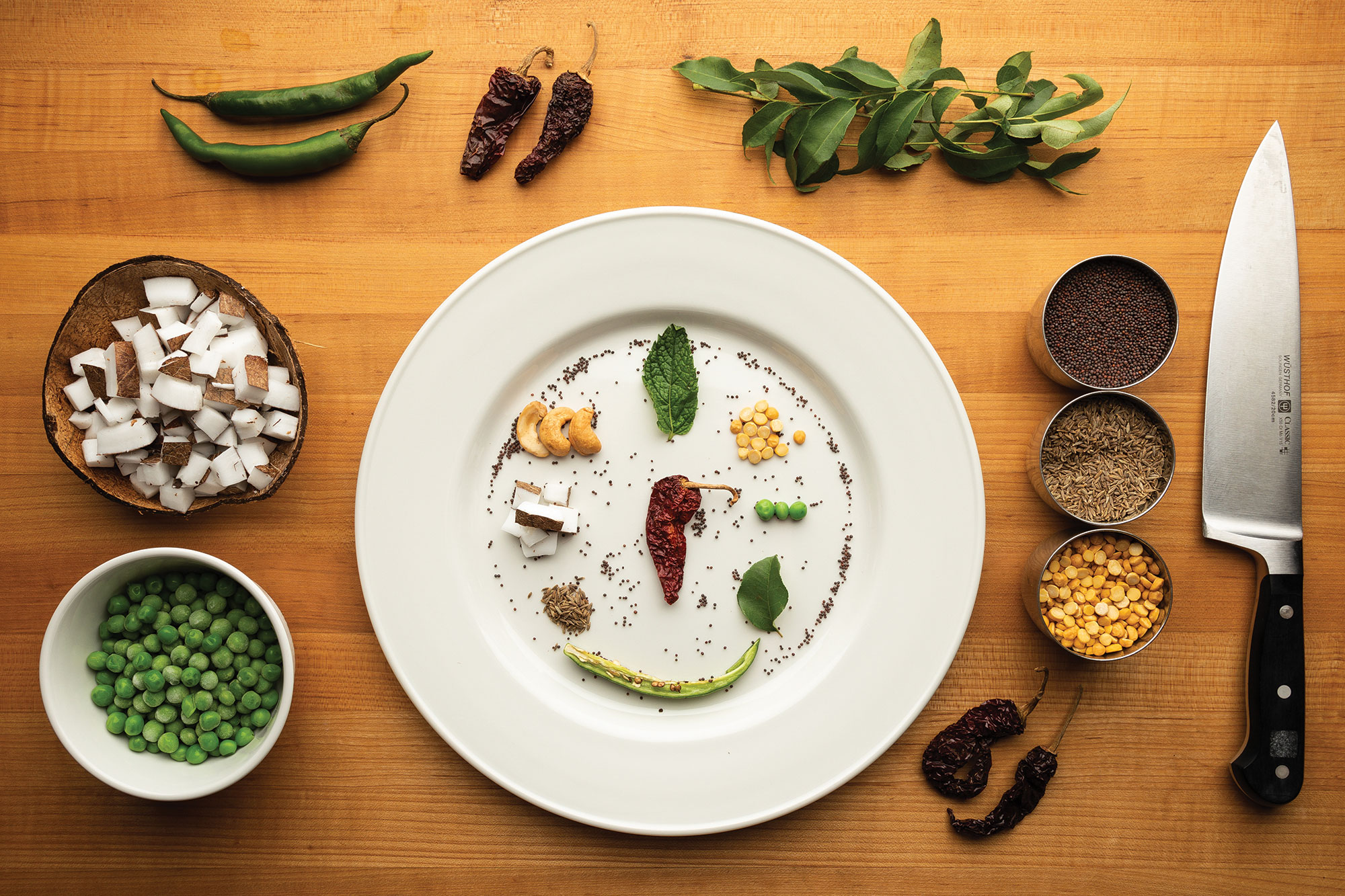
Ingredients
- 2 cups long grain or Basmati rice, dry
- 4 cups water
- 1 fresh coconut or 1 package unsweetened coconut flakes
- 1 can coconut milk
- 2-3 sprigs mint, leaves only
- 2-3 serrano peppers, chopped
- 2-3 sundried Kashmiri chili peppers
- 1 teaspoon black mustard seeds
- 1 ½ teaspoons cumin seeds
- 1 ½ tablespoons cashew nuts, whole or split
- 2 ½ tablespoons coconut oil
- 1 sprig curry leaves
- 1 tablespoon split lentils
- ½ cup frozen green peas
- Salt
Yields: 4-6 servings
Directions
Step 1: Cook the rice using a rice cooker or stovetop. You will need about 4 cups of water to 2 cups of dry rice.
Step 2: If using a fresh coconut, break open the coconut and collect the water. You won’t need the water for this recipe, but it makes a refreshing drink. Separate the coconut meat from the shell and cut the meat into small pieces.
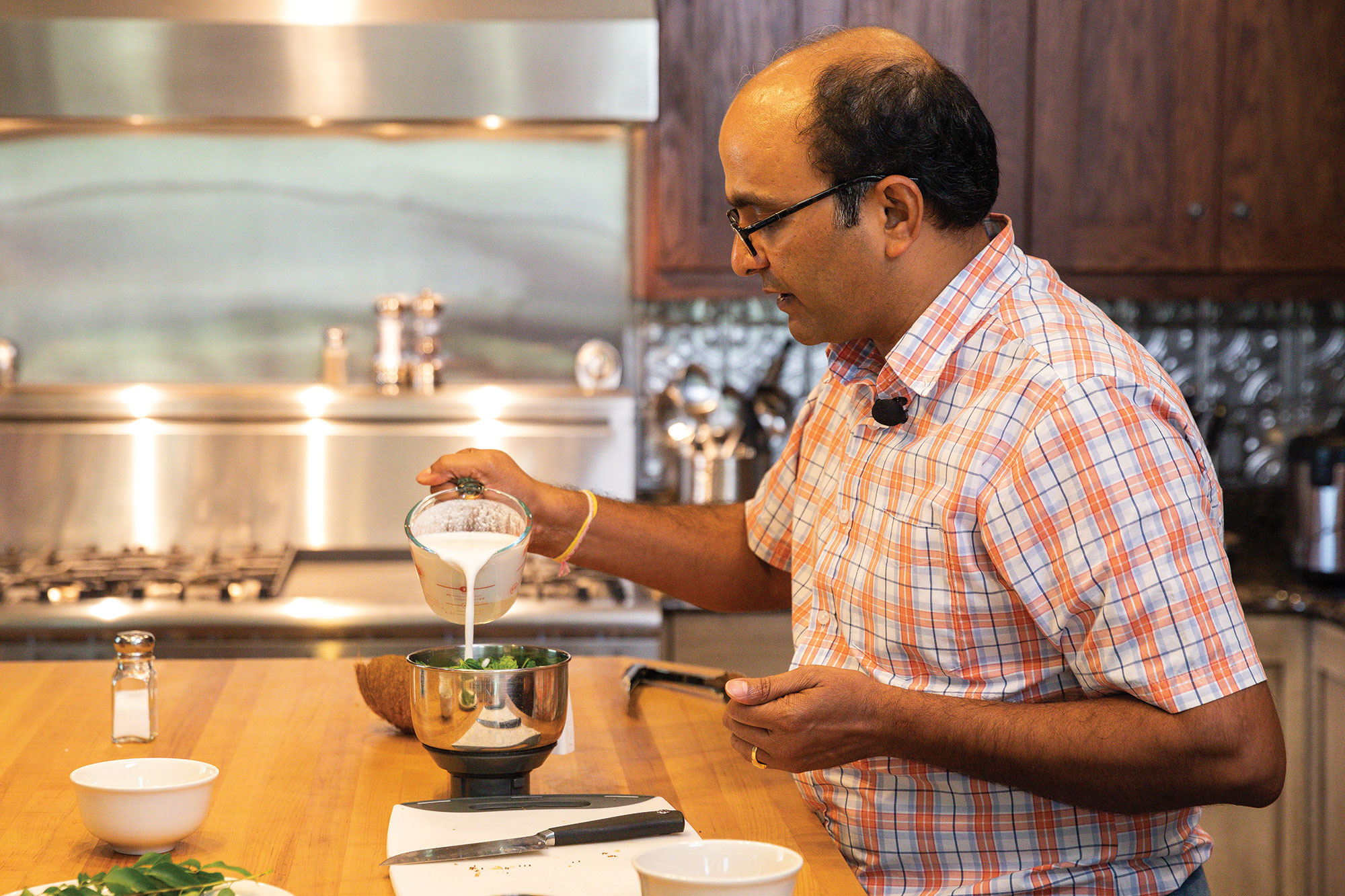
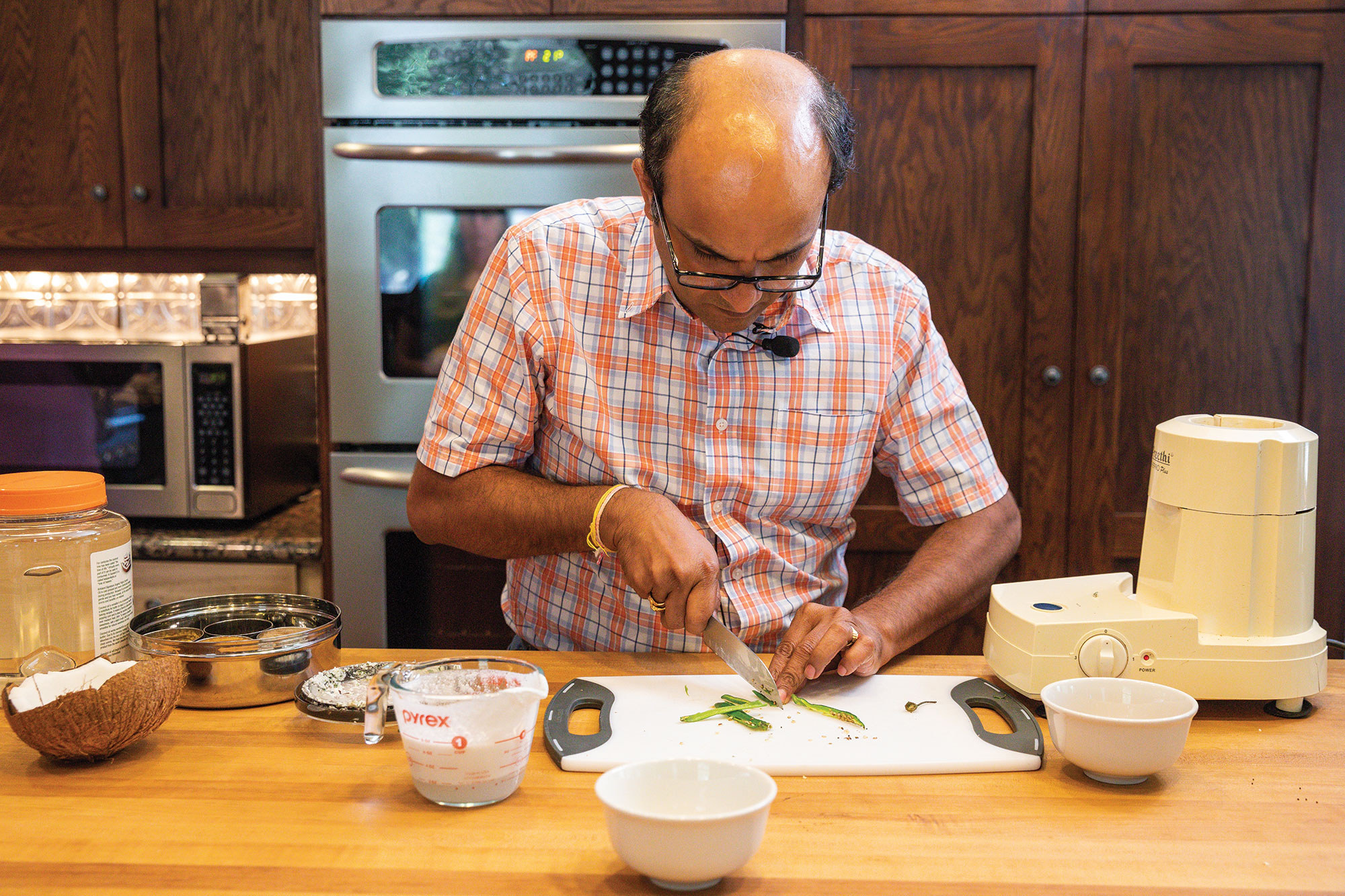
Step 3: In a blender, mix the coconut pieces, one serrano pepper (chopped), mint leaves and about a quarter of the coconut milk. Pulse three to four times or until the consistency becomes creamy with some graininess. Adjust ingredients if needed.
Step 4: Heat the coconut oil in a cast-iron pan on medium heat.
Step 5: Begin tempering the spices by placing one spice in the oil at a time in the following order: First, place the lentils in the oil and stir. Once they start browning, add the cumin seeds. Once the cumin seeds start crackling, add the mustard seeds. Next add the chopped serrano peppers based on your desired level of heat. Then break the chili peppers in half and add them as desired. Finally, add the whole curry leaves. Throughout the tempering process, use a spatula and keep stirring the spices so that they do not burn.
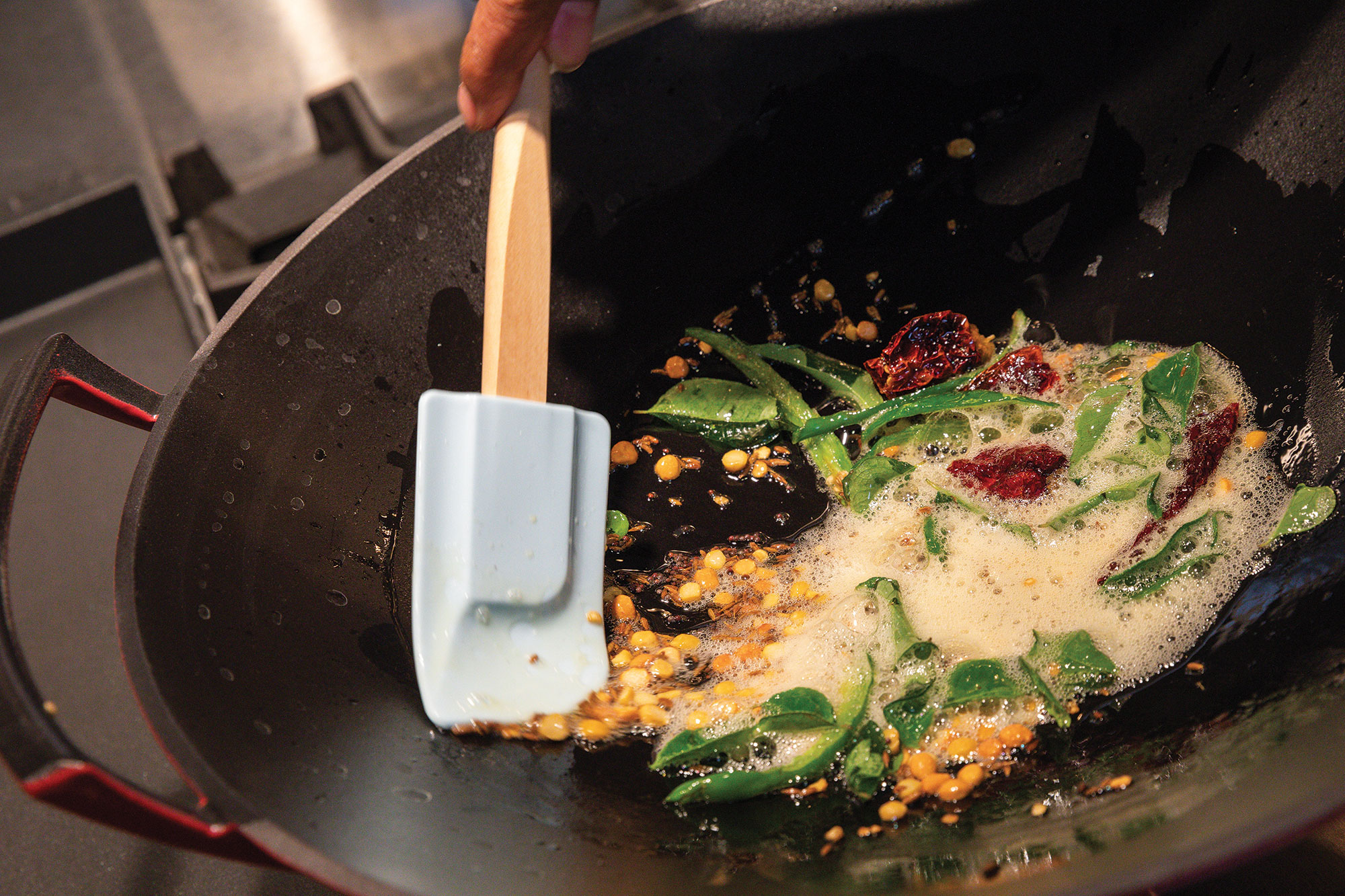
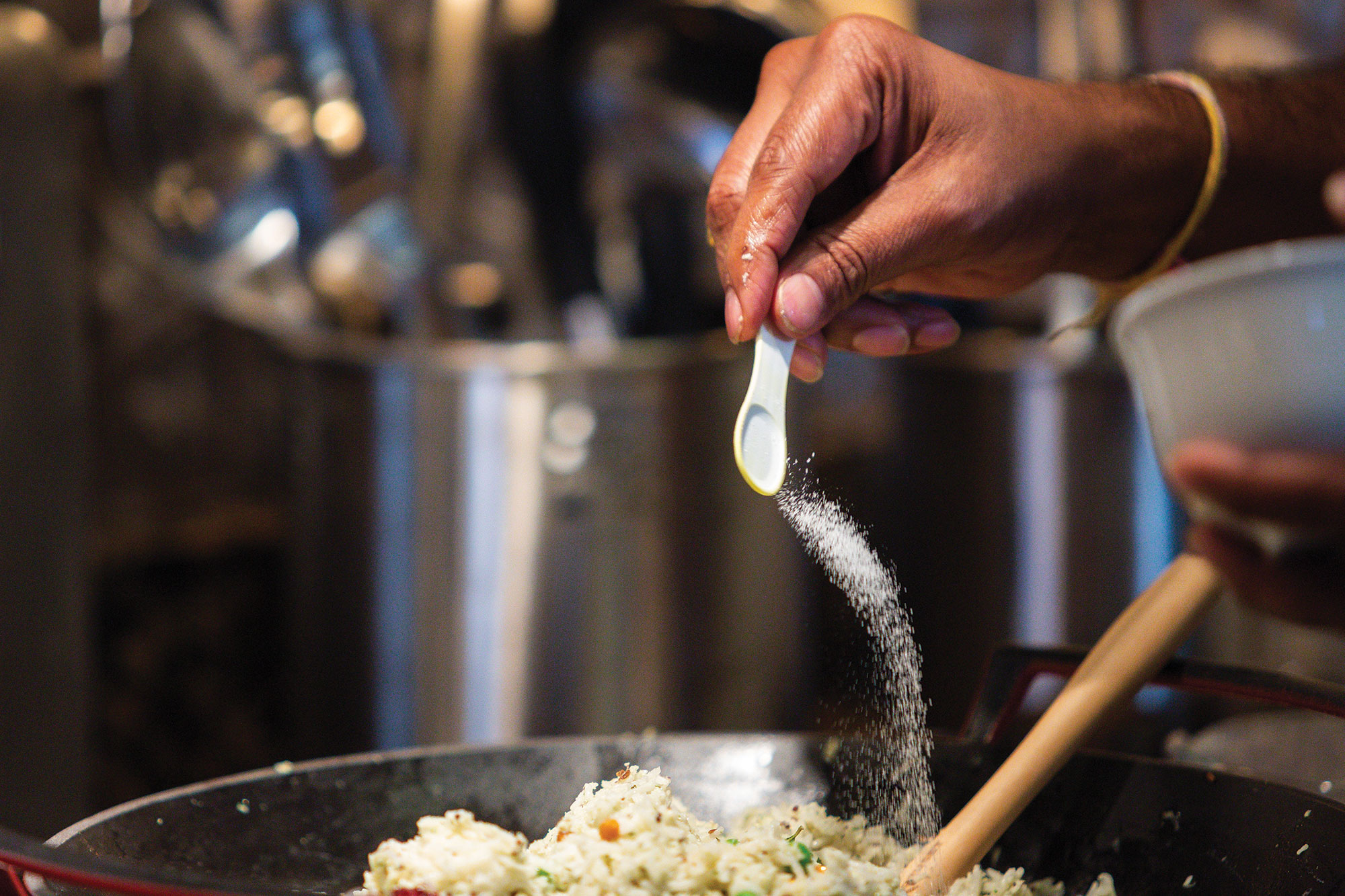
Step 6: Add the coconut mint mixture to the spices and stir. Then add the rest of the coconut milk. Allow the mixture to simmer and thicken. As the coconut milk reduces, it will bind all the flavors together.
Step 7: Taste and add salt as needed. Once the mixture has thickened, add frozen green peas and mix well.
Step 8: Once peas are heated through, slowly incorporate the rice. Pay special attention to make sure the rice does not clump but comes out as individual grains. Fold the rice into the mixture on low heat. Taste and add salt as needed, and eat plain or serve with a coconut-based curry like Yuhong Tang’s Thai Chicken Curry.
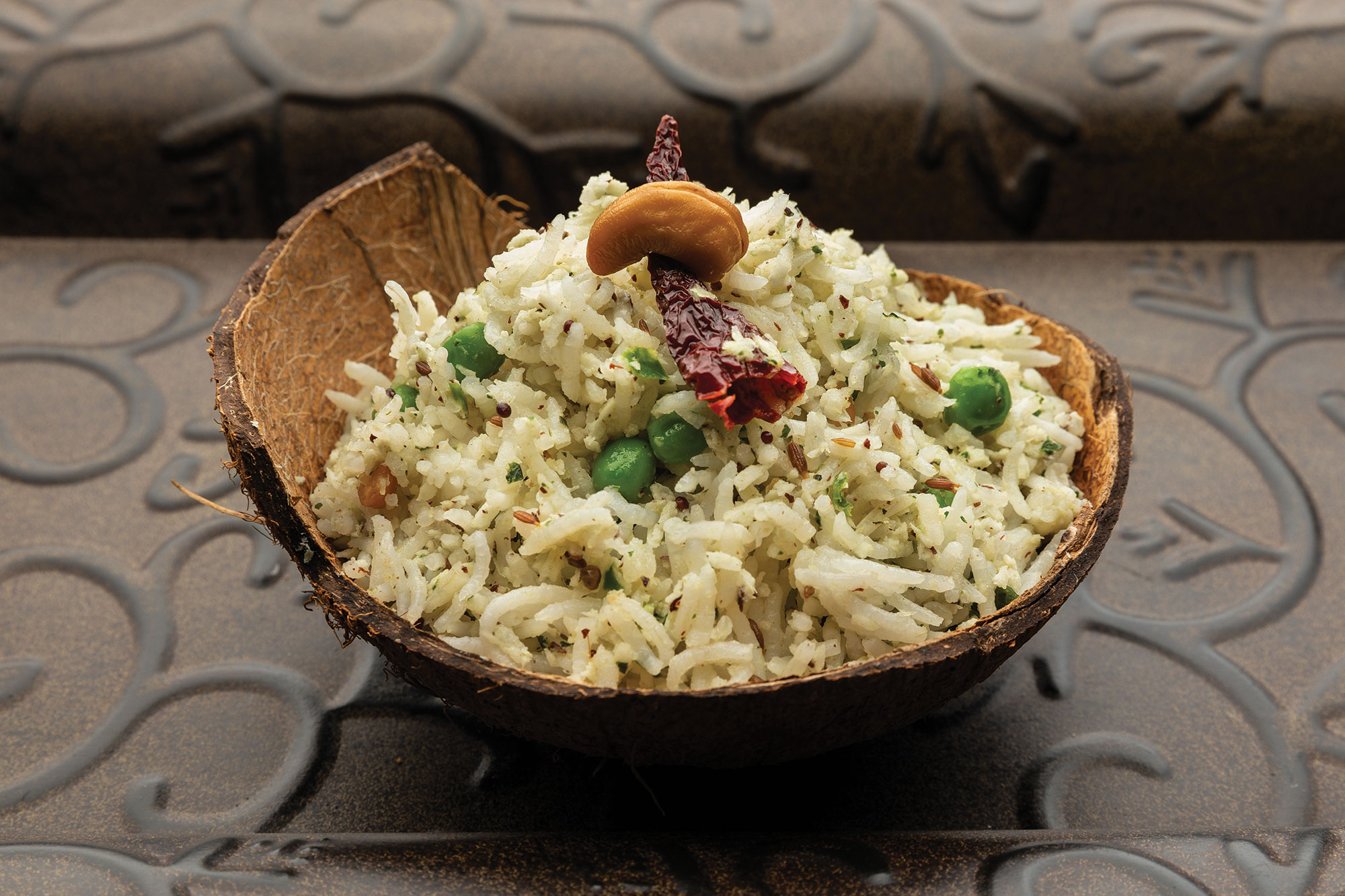
What is Tempering?
Tempering is the process of roasting whole spices in oil. It allows the essence of the spices to seep into the oil and any other foods cooked with it. The order in which you roast the spices will strongly influence the flavor of the dish. You will want to give each spice time to roast, but be careful not to burn the spices. If needed, turn the heat down.
Suresh Bhamidimarri, Ph.D., leads the Noble Research Institute Forage Legumes and Cover Crops Breeding Laboratory. He also served the organization as a postdoctoral fellow from 2007 to 2009. When Bhamidimarri is not experimenting in the laboratory, he is experimenting in the kitchen.



Comment